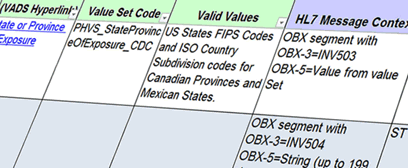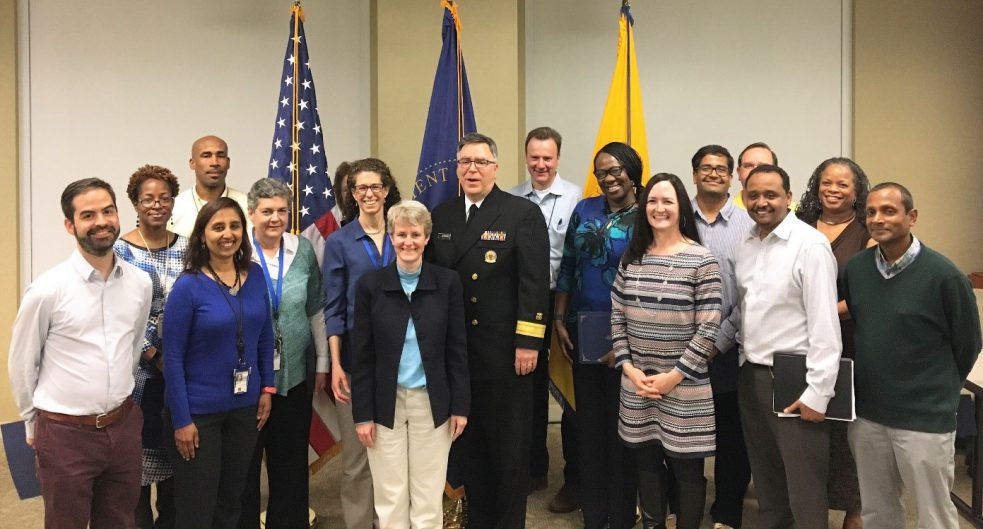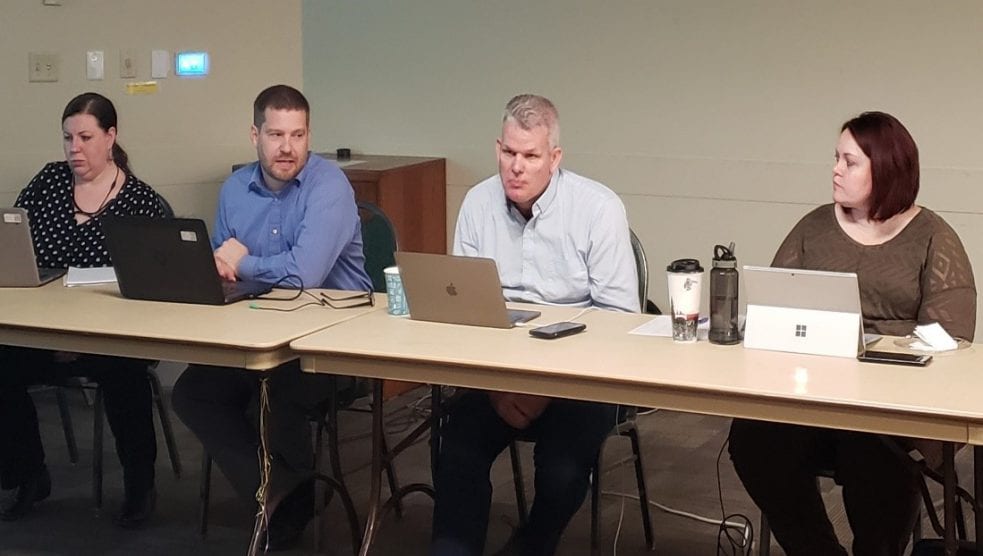COVID-19 Onboarding Speeds Data to CDC

Innovation is key to supporting the nation’s response to the coronavirus disease 2019 (COVID-19) pandemic. Staff working on the National Notifiable Diseases Surveillance System (NNDSS) in the Division of Health Informatics and Surveillance (DHIS), Center for Surveillance, Epidemiology, and Laboratory Services, relied on innovation to develop a message mapping guide (MMG) for COVID-19. The MMG cut system onboarding time for state, local, and territorial health departments nearly in half and improved how NNDSS receives, processes, and provisions data about cases of COVID-19 to the disease experts at CDC. Through a collaborative pilot project, Kansas and Utah were the first two states to successfully use the MMG to notify CDC about COVID-19 cases.

Example of an NNDSS message mapping guide.
What are Message Mapping Guides?
MMGs describe the data content needed for electronic case notifications about notifiable diseases or conditions that health departments send to CDC through NNDSS. MMGs provide guidance on how to package and transmit data about diseases and conditions that can cause serious illness or a major public health concern. Onboarding is the CDC process that helps health departments use an MMG to send their data to CDC.
Innovating with Pilot State Cohorts
To develop the new COVID-19 MMG, the Data Standardization and Assistance Team (DSAT) in DHIS worked with several internal and external teams. “We used an innovative approach to developing and onboarding this guide because we saw a critical need to get timely COVID-19-related data to CDC,” said Michele Hoover, public health advisor and NNDSS technical lead for onboarding and technical assistance.

Michele Hoover, front center left, is part of the NNDSS team recognized with a CSELS Honor Award by CSELS Director Dr. Michael F. Iademarco (center).
DSAT worked with the Association of Public Health Laboratories (APHL) to develop a cohort of five states to participate in the pilot: Connecticut, Idaho, Kansas, Michigan, and Utah. Kansas was the first jurisdiction to implement the COVID-19 MMG, about a month or two ahead of schedule. “When we were asked to be part of the cohort, we immediately realized that this opportunity was going to be innovative and would replace the multiple ways that we were reporting COVID-19 cases to CDC,” said Shannon Sandall, director of disease surveillance, Kansas Department of Health and Environment (KDHE). “Being a part of the initial discussion just made sense to us, so we jumped right on it.”
During the process, the pilot jurisdictions worked together and shared experiences, knowledge, and resources. For example, Utah introduced Kansas to EpiTrax, an open source, configurable surveillance and outbreak management application that allows local, state, and federal agencies to identify, investigate, and mitigate the impact of communicable diseases and other public health events. Sujata Mallik, public health information specialist at KDHE and a core member of the cohort, explained, “The adoption of EpiTrax provided us with a lot of beneficial features and functionalities. We can add new forms, adjust different information inside the forms, and create needed forms for COVID-19 investigation in a matter of minutes.”
In addition to EpiTrax, the new streamlined COVID-19 MMG and onboarding simplified KDHE’s process and eliminated a lot of programming. Sandall explained, “Under the old process, it took months to onboard, but for COVID-19, it took less than a fourth of the time. Before the cohort, we had files with about 200 fields and had to identify all the fields, perform coding, map variables, and pull data out of those files to provide information to CDC. When we started the cohort for onboarding, most of the fields needed in the MMG were already in the system. It was helpful that we had already gone through the process and had built out everything beforehand.”

From a pre-COVID-19 meeting, Utah Department of Health staff—from L to R: JoDee Baker, Joe Jackson, Kurt Liedtke, and Amy Carter.
Utah was the second jurisdiction to onboard, completing the process in less than 3 months. They used a simple storage service (S3) application to send their messages to CDC, working in collaboration with the CDC Message Validation, Processing, and Provisioning System (MVPS) team in DHIS. Rachelle Boulton, surveillance and data management program manager, Utah Department of Health, explained, “S3 allowed us to code and pull data out of EpiTrax, fill in backlogs, and send messages in record time. When we started onboarding, we had about 350,000 messages and were able to send those messages to CDC in 6 weeks. Before S3, it would have taken us 6 months to send over the same information.”
Collaborating Leads to Success
As a result of the pilot state cohort, the new onboarding process has significantly streamlined how states send data to CDC. Under the previous process, it took about 4 months for jurisdictions to fully onboard. The new streamlined guide and process have nearly cut that time in half—now jurisdictions are completing the onboarding process in about 2.5 months.
Hang Nguyen, health scientist, DHIS, and an onboarding specialist, is pleased with the project’s success. “We began collaborating with the National Center for Immunization and Respiratory Diseases and the COVID-19 Data, Analytics, and Visualization Task Force when the pandemic started. We all worked hard to provide consolidated feedback to the jurisdictions during onboarding and ensure that our process was timely, efficient, and transparent, which helped us move forward successfully,” said Nguyen. She also credits the success of the project to the cohort: “The cohort helped us speed up onboarding and allowed jurisdictions to collectively share resources and technical assistance as we implemented the COVID-19 MMG.”
Hoover echoed Nguyen’s feedback: “Working with this pilot group created momentum and was a very collaborative environment. With our MVPS team working with jurisdictions to send messages to CDC using S3, now states can send 100,000 messages in the same timeframe that it would have taken to send 100 messages,” said Hoover.
Sandall also values the collaboration, pilot consortium, and resources that Kansas received from the experience. “We appreciate the support from APHL and the opportunity to work with them,” she said. “We are also grateful to the CDC Epidemiology and Laboratory Capacity for Infectious Diseases Cooperative Agreement for providing funding.”
DHIS is pleased with the success of the COVID-19 MMG pilot. DHIS Director Paula Yoon remarked, “This important work supports the CDC Data Modernization Initiative and NNDSS innovation efforts to make it faster and easier for public health jurisdictions to send data to CDC so that CDC can improve how data are delivered to disease programs. I support the ongoing efforts of DSAT to apply the lessons learned in streamlining the COVID-19 MMG and onboarding process to other NNDSS guides.”
Stay Up-to-Date
To see the progress of health departments across the nation in implementing the COVID-19 MMG, access our interactive jurisdiction implementation map and click on “COVID-19” in the drop-down menu.